Text
Language-elitism and Exclusivity in the Art World: The Importance of Accessibility in Art Language
By Kendall Rogers
If you have been involved at all in an education in art or tried to talk about art with someone who knows a lot about art, you can agree that there are certain terms used that are not generally known outside of the art world. All of us who went to art school can remember sitting in critique while people just used seemingly random “big words” to describe an artwork and sound intelligent regardless of if it even made sense. You could be sitting in critique and have no idea what someone just said but just pretend to go along with it until you eventually get a better grasp of art language yourself. “Terms like “juxtaposition” and “assemblage” are used like secret passwords to an exclusive club. And we use these terms in our efforts to belong to the realm of snobby critics and hyper-conceptual artists.”- huffpost
The truth is, these terms do have definitions and can be explained in more understandable ways. If you use these words, shouldn’t you be able to define these words? If you cannot explain it in terms anyone can understand, then maybe you don’t have a full grasp on it yourself. However, if you can explain it in a way anyone can understand, then why aren’t you? It might be because you unknowingly (or knowingly) are participating in language-elitism and exclusivity.
I personally grew up in the Deep South, which has its limitations, but one thing about the South that I appreciate is the casual language and heavy use of slang. I think that talking in a casual language is more accessible and allows people who aren’t necessarily as educated to participate in the conversation. Slang is a great example of a language looked down upon because of language-elitism and classism in general. An even better example would be African American Vernacular English. Many people see this language as lesser or an indicator of lower intelligence, but it is not that at all. It is simply another version of the English language used for people to communicate with one another. In this particular case, the language-elitism is just racism in disguise. “African American English, like other dialects used in the U.S., is a legitimate form of speech with a deep history and culture. Yet centuries of bias against speakers of AAE continue to have profound effects on employment, education, the criminal system and social mobility. “ - la times
At its core, the purpose of language is to communicate with other human beings. So why is some language considered elite? A language that is harder to understand essentially is doing a poor job of communicating with others, which is the whole purpose of language. So, one could maybe argue that difficult-to-understand language is technically lesser.
I do understand the need for such a vast vocabulary when it comes to describing art; art, after all, transcends language and often is indescribable. So we naturally have come up with many terms to describe aspects of an artwork that are hard to describe. This, in itself, is not problematic. However, sometimes this language is overused or used only to exclude those who don’t understand from really talking about or learning about art. This elitism stems from wanting only those who are educated in art to join the conversation. However, art is not an elite thing that “commonfolk” do not understand. Art has been around since the beginning of humanity. It has been a visual language that everyone can understand. Just like music, art is universal. And with music, the general public is not excluded from the conversation, so why is the general public excluded from the conversation when it comes to art?
So often we stress the importance of the arts, we teach it to children, we use it as a form of healing, it is encouraged by psychologists to promote healthy living and self expression, and historically it has been a collective experience. Art is a form of interpersonal communication. It transcends barriers of language, race and national origin. You need no education in art to be able to interpret, see, or talk about art; it’s human nature. As Noel Carroll states in her article, Art and Human Nature (in The Journal of Aesthetics and Art Criticism), the concept of human nature implies some universalities across the human species arise because of something in human biology. Art is found in many cultures across the world, and it appears to have arose independently in each place without outside influence from another culture. If the worldwide distribution of art cannot be explained by cultural diffusion, the alternative is that art has origins in something common to humankind, something biological. So recognizing, making, and interpreting art are, quite literally, human nature.
So who is at fault? It is impossible to set blame on something that is as systematic as elitism. You could try to blame it on art education, art journalism, art critics, or even artists themselves, but in reality, the problem is the system that has us believing that some educated people are elite and others should be excluded from the conversation. There is a very small circle of collectors, gallerists, and museum directors that practically determine what is good art and what is shown. The art market has so much control over what is seen and popular based only on the deemed economic value. Collectors are often buying art as an investment of money, hoping the value will go up and they will make more money if they sell it. So essentially, what is shown is not based on anything but what is considered a good investment.
There is room for change. What the art world needs is people to speak up and talk about art regardless of if they are deemed “an intellectual.” People need to talk about art with their friends, their family, on the internet, and on social media. Instagram is undoubtedly changing the art world. It is a much more democratic and accessible platform to show work, and anyone with an Instagram account can view art and talk about it. Galleries and writers need to strive to be this accessible. If people are less intimidated, they are more likely to participate in the conversation. It is not just the role, but also the duty of the next generation of art journalists, critics, artists, and gallerists to expand the conversation.
https://www.artsy.net/article/artsy-editorial-art-art-accessible-people
https://www.huffpost.com/entry/misused-art-terms_n_5214488
https://www.brainyquote.com/quotes/albert_einstein_383803
https://www.latimes.com/opinion/story/2020-07-14/african-american-english-racism-discrimination-speech
Carroll, N. (2004). Art and Human Nature. The Journal of Aesthetics and Art Criticism, 62(2), 95-107. Retrieved August 25, 2020, from http://www.jstor.org/stable/1559194
4 notes
·
View notes
Link



ARTICLE COURTESY OF THE HOLE NYC
“CAITLIN CHERRY CRICHOUES INDIGNATION
October 15 – November 15, 2020
OPENING: Thursday, October 15th from 6-8pm
The Hole is pleased to present Crichoues Indignation, an exhibition of new works by Caitlin Cherry, on view from October 15th-November 15th, 2020 with a public opening on Thursday, October 15th from 6 to 8pm. Crichoues Indignation will feature a slate of new creations—working between painting, sculpture and installation—that expand on the themes and imagery laid out in Cherry’s online show Corps Sonore at Luis De Jesus Gallery in Los Angeles.
The exhibition’s title is drawn from a misspelled Kanye tweet, deriving from an online rant involving his wife, Kim Kardashian. The rapper’s misspelling of “righteous” melts into nonsense when abstracted from its original context, playing at the question of codes, text and syntax—but the discomfiting issues of gendered power and respectability politics remain palpably near to the surface, explored in more depth across Cherry’s new compositions.
Cherry’s paintings feature larger-than-life subjects in striking color: Black femme figures, familiar composites drawn from an image culture that thrives on appropriating these women’s likeness while rarely crediting their creativity. Sustaining her engagement with the subjects of the previous show, which depicted the women employed at a Brooklyn cabaret, Cherry now paints dancers, bartenders and Instagram models working at cabarets and as online influencers. Across her recent work, these women’s bodies are overlaid with cryptic alphanumeric symbols—kaleidoscopic incursions that refer back to the codes and algorithms that power our media landscape, fueling the algorithmic tools of Black culture’s dissemination and extraction.
They also play at themes of authenticity and authentication, gesturing towards the PIN numbers and digital locks that facilitate the online sale of artificially-editioned art. While the women on view would seem to bare it all, the invocation of cryptography suggests a layer of nuance and agency—a reproach to the traditional female nude figure who passively abides her own sexualization.
While researching these paintings, Cherry was led down Instagram wormholes and meandering paths of internet-fuelled interest, combing through feeds to source and digitally-alter subjects that she eventually assembles into her psychedelic compositions. Cherry’s colorful canvases are engaged in a kind of archival work: they highlight the dimensions of Black women’s representation that would otherwise be lost within the unthinkably vast expanse of dead data. Resisting easy placement in the cultural marketplace of hot-takes—a reductive discourse native to the same online channels that Cherry’s subjects are drawn from—these paintings decline respectability politics in favor of a nuanced and unabashedly sexy assessment of online drama, distortion and desire.
These paintings are set apart from their predecessors by the subtle inclusion of a male presence: “Let’s Play”-style YouTube gaming personalities occupy the corner of the works, riffing on the picture-in-picture—or critic-in-painting—features of digital streaming. The gamers’ position in the frame also refers to the teleconferencing platforms where everyday life and labor are increasingly centered. Poised within the same “desktop” as the women, the gamers’ gaze is triangulated with the viewer’s, igniting the painting to animate itself.
Caitlin Cherry (b. 1987) draws on painting, sculpture and installation in her multifaceted practice, coalescing into articulate and alluring representations of Black femininity. Filtering these media through layers of digital manipulation, her work draws parallels between Black femme bodies, frequently commodified and positioned as sexual assets, and the seductiveness of art objects in the commercial gallery circuit. Cherry is currently Assistant Professor of Painting and Printmaking at Virginia Commonwealth University and the founder of the new online program Dark Study, a contra-institutional space for radical learning about art and theory. Her paintings have been exhibited at the Brooklyn Museum, Performance Space and The Studio Museum in Harlem, among other institutions of note. She is a recipient of a Robert Rauschenberg Foundation Fellowship Residency and Leonore Annenberg Fellowship.
For press information please contact Olu & Company For available works please contact Raymond Bulman”
- the Hole NYC
0 notes
Text
Makeupbrutalism Interview
By Kendall Rogers
“MY BROTHER TOLD ME ONCE, MY MENTAL BREAKDOWN IS PERFECTLY TRACKABLE ON MY ACCOUNT.”
“EVERYTHING IS FOR SALE, EVERYONE IS FOR SALE. SOMEONE SHOULD BUY ME TOO.”
“HATE IS SOMETHING, WHICH SCARES A LOT OF PEOPLE, BUT FOR ME IT IS A TOOL TO CREATE, LIKE ANY OTHER INSPIRATION.”
MAKEUPBRUTALISM is an Instagram account with 115k followers, run by makeup artist Eszter Magyar, that is self-proclaimed “the most hated ‘beauty account’ since 2018.″ She recently collaborated with Gucci Beauty and often uses her account to make bold statements about the beauty industry. I was lucky enough to interview her.
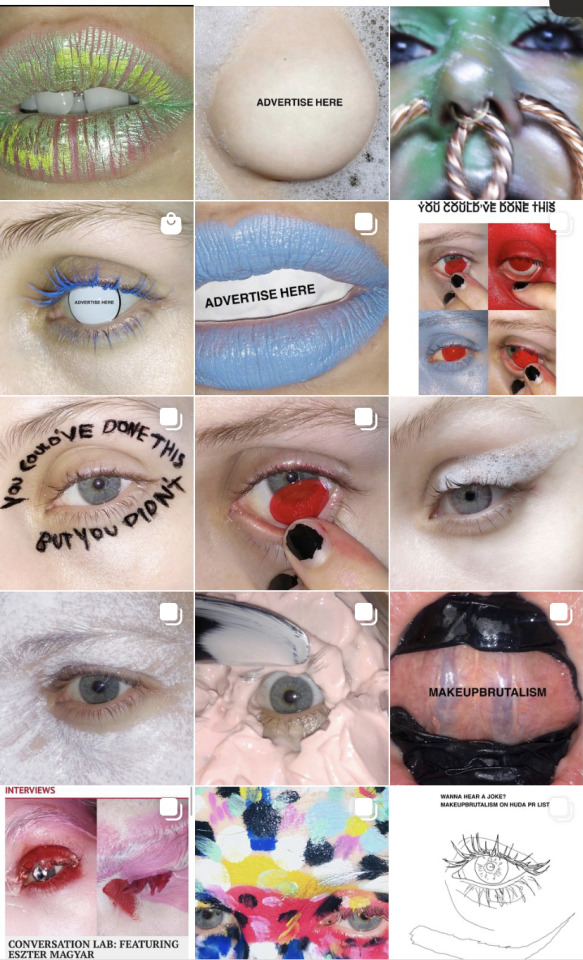
Interview:
What role does Instagram play in the identity of Makeupbrutalism? Is the Instagram page a persona and each post is an art piece? Perhaps the entire Instagram page itself is the art piece and Eszter Magyar is the artist?
INSTAGRAM WAS THE PLACE WHERE MAKEUPBRUTALISM WERE BORN. FIRST IT WAS SIMPLE EXPERIMENTING - BUT SLOWLY IT TURNED INTO AN ALTEREGO ( WHICH I WANTED TO KEEP SEPARATED FROM “ESZTER MAGYAR, MAKEUP ARTIST” ).
AFTER IT BECAME AN ARTIST STATEMENT. NOW IT FEELS MORE CLOSE TO ME THAN ANYTHING ELSE - I BECAME MY PROJECT AND VICA VERSA. WHAT YOU SEE THROUGH MAKEUPBRUTALISM IS ME, MY MOODS, MY INTERESTS, MY OPINION.
I also wanted to talk about Instagram as a platform. Typically in the art world, artists are represented by a gallery and well known outside of Instagram, and their Instagram may or may not play a large role. But due to the increasing popularity and normalcy of Instagram, many artists become very famous on Instagram itself. Do you think the world of Instagram and the art world are independent? In the current art world, “Instagram artists” are sometimes not taken as seriously by critics, journalists, collectors, gallerists, etc. Why do you think that is? Is this changing?
IT IS JUST A GUESS , BUT PROBABLY THE ART WORLD IS TOO ELITIST TO LET “INSTAGRAM ARTIST” IN. FOR ME, AT THE MOMENT, THE BIGGEST TASK IS TO LEAD MAKEUPBRUTALISM IN THE OFFLINE SPACE. I HAVE THE FEELING IT'S TIME. I WOULD LOVE TO MAKE A BOOK, HAVE PLENTY OF IDEAS FOR INSTALLATIONS - TO WORK MORE ON MY EXISTING IDEAS - I THINK THEY COULD WORK IN THE OFFLINE SPACE VERY EFFECTIVELY TOO. AND EVEN IT IS HARD TO LEAVE INSTAGRAM BEHIND - IT DOES NOT MEAN ITS IMPOSSIBLE.
People are very divided when it comes to your account. Why do you think people hate it? What would drive them to hate it so much they decide to comment insults, sometimes even violent? Historically, many artists have faced criticism, but with Instagram, people can hide behind the seemingly anonymity of the internet, and hate comments have become very popular on Instagram, sometimes even threatening. What do you think the ability to criticize an artist directly and publicly in the comments changes about the aspect of art-criticism?
THIS IS A COMPLICATED TOPIC. A WEEK BEFORE I WOULD HAVE ANSWERED DIFFERENTLY . IM CRITICISED ALL THE TIME, PEOPLE TELLING ME HOW BAD AND WORTHLESS I AM - THAT I SHOULD STOP THIS, THAT IT IS A SHAME FOR MAKEUP ARTISTRY, THAT I DESTROY CRAFTMANSHIP ETC - BUT THE THING IS, PEOPLE ARE SELFISH ( IM SELFISH TOO, THATS HOW I KNOW ) THEY DONT REALISE I DO THIS FOR MYSELF AND NOT FOR THEM AND AS LONG AS IT MAKES ME HAPPY I WILL NOT STOP. I DONT WANNA PLEASE ANYONE - IT IS EVEN IMPOSSIBLE. FEW DAYS AGO SOMEONE JUST COMMENTED UNDER ONE OF MY POST THAT SHE ( A TOTAL STRANGER WITH VISIBLY NO BACKGROUND IN ART NOR MAKEUP ) HAS THE RIGHT TO CHALLENGE ME - AND IT MADE ME RAGE. NOT EVERYONE HAS THE RIGHT TO CHALLENGE EVERYONE - I DONT HAVE THE RIGHT TO CHALLENGE EVERYONE, YOU DONT HAVE THE RIGHT TO CHALLENGE EVERYONE. AND IT WAS QUITE A DISCOURSE - SOMEONE ATTACKED ME IN THE VERY MOMENT HOW PUTTING HIERARCHY ON OTHERS IS NOT SO CUTE IN 2020. THE THING IS - IF YOU ARE A PERSON, WHO PUT LOT OF TIME, ENERGY, MONEY, EFFORT IN WHAT YOU DO AND YOU SUCCEED - YOU PUT YOURSELF IN A BETTER POSITION AS PEOPLE WHO DONE NOTHING TO BE ON THAT LEVEL YOU WORKED FOR. LIFE IS NOT CUTE AND EXPERIENCE AND HARD WORK SHOULD BE VALUABLE. I DONT CARE PEOPLE BEING RUDE TO ME, BECAUSE THEIR BAD ATTITUDE IS THEIR PROBLEM NOT MINE. I REMEMBER, I ASSISTED A MAKEUP ARTIST IN MY YOUNG YEARS … I LEARNED A LOT FROM HER, I RESPECTED HER KNOWLEDGE - EVEN IF SHE WAS A TOTAL ASSHOLE WITH ME ALL THE TIME. ONCE SHE TOLD ME - “I DONT THINK YOU WANT TO BE A MAKEUP ARTIST AT ALL “ IN FRONT OF EVERYONE … YOU KNOW WHAT HAPPENED ? 2 YEARS LATER I GOT THE MAJORITY OF HER JOBS, BECAUSE I BECAME A GOOD MAKEUPARTIST TOO, BUT WITH A WAY BETTER ATTITUDE.
One thing I really like about you is your boldness, and your confidence projects a beautiful sense of authority. You often incorporate your criticisms into your posts as part of the art. (One piece in particular would be “You Could Have Done This- But You Didn’t.” Additionally, you proudly have “the most hated ‘beauty account’ since 2018” in your Instagram bio. Another example would be a post titled “I hope you go blind, do bleach next.”) Can you talk about your thoughts behind these? What role do your critics play in your creative process?
HATE IS SOMETHING, WHICH SCARES A LOT OF PEOPLE, BUT FOR ME IT IS A TOOL TO CREATE, LIKE ANY OTHER INSPIRATION. I DON'T WANNA LIE, I DONT WANNA ACT LIKE THESE THINGS DOESN'T AFFECT ME - THEY DOES, BUT I WILL USE IT IN A WAY IT MAKES ME MOVE FORWARD. WHY WOULD I STOP MYSELF BECAUSE OTHERS ARE NOT PLEASED WITH ME ? WHO CARES ? I DO WHAT I FEEL I HAVE TO DO .. NOT WHAT OTHERS WANT ME TO. THAT'S WHY IT IS AUTHENTIC.
Let’s talk about uglymakeuprevolution. It appears to be a hashtag and an account for posting in the community of “ugly makeup.” Revolution is a powerful word. How is ugly makeup making a revolution? If you could describe the uglymakeuprevolution to someone who does not follow the makeup industry whatsoever, how would you describe it?
IT IS ANOTHER OPTION NEXT TO FULL GLAM. AND PEOPLE LOVE TO CHOOSE ( THEY DON'T HAVE TO, BUT IT’S HUMAN NATURE I GUESS ) . WHEN I STARTED THE HASHTAG, I USED IT FOR MY OWN POSTS - A FEW WEEKS LATER I REALISED OTHER PEOPLE FEEL THE SAME WAY ABOUT THEIR POSTS TOO. IT CAME ALIVE WITHOUT ME, WHAT I DID WAS: CREATED THE ACCOUNT, SELECTED AND CURATED THE CONTENTS - THAT'S HOW UGLYMAKEUPREVOLUTION WAS BORN. THE WORD UGLY IS SIMPLY GASLIGHTING, WHAT WE WANNA SHOW, THAT IRREGULARITY IS POWER. IT IS EXCITING AND LIBERATING.
You also describe yourself as a “makeup activist.” What exactly is a makeup activist? In what ways would you like to see political or social change? Does the beauty world need more activists? How can someone else become a makeup activist?
IM AGAINST OF PRIVATISATION OF BEAUTY. I'M BELIEVE HUMANS CAN DECIDE WHAT THEY FIND ATTRACTIVE FOR THEMSELVES, I DON'T THINK WE NEED BRANDS ( OR OTHER PEOPLE - HATE COMMENTS … ) TO TELL US WHAT WE HAVE TO LOVE. DIASTEMA IS A GOOD EXAMPLE. I'VE GOT TOLD A HUNDRED MILLION TIMES I SHOULD FIX IT ( SOME EVEN CALLED IS A “HEALTH ISSUE” ) BUT IF YOU ASK ME, IT IS PART OF MY CHARACTER AND EVEN IF SOMEONE WOULD PAY ME I WOULDN'T FIX IT - BECAUSE I LEARNED IN THE PAST HOW TO LOVE IT. IF WE COULD NORMALISE “HUMAN” FEATURES, IF WE COULD LEARN SELF ACCEPTANCE AND SELF LOVE .. WE WOULD LIVE IN MUCH HEALTHIER WORLD.
Are makeup and art mutually exclusive (or at least, relatively independent)? In an article by WRPD Magazine, you are quoted saying, “If there would be a scale of one to ten (where makeup is one, art is ten) Makeupbrutalism would be somewhere in the middle.” Can you expand on this? Is there a reason you view it as a spectrum and not one-in-the-same? You also are a makeup artist professionally- What does a session with Eszter Magyar look like?
AS A MAKEUP ARTIST, YOU HAVE CLIENTS. YOU ARE PART OF THE TEAM. YOU STAND SOMEWHERE IN A HIERARCHY. THE END PRODUCT IS NOT ABOUT YOU, NOR YOUR VISION. PEOPLE LOVE TO ROMANTICISE MAKEUP ARTISTRY, AND EVEN IT IS A BEAUTIFUL AND CREATIVE PROFESSION, IT IS A JOB LIKE ANYTHING ELSE. AS A MAKEUP ARTIST I HAVE TO DO WHAT MY CLIENTS WANT ME TO - IF I DO MAKEUPBRUTALISM - IN THE TEAM. THE MODEL, THE PHOTOGRAPHER, THE POST PRODUCTION, THE ART DIRECTOR - EVERY LITTLE DETAIL IS ABOUT ME. I'M SELFISH - I LOVE TO WORK THAT WAY TO BE HONEST. THE BIGGEST DIFFERENCE IS - THAT BY MAKEUPBRUTALISM - MAKEUP IS RIPPED OUT OF ITS ORIGINAL CONTEXT ( FASHION OR PHOTOGRAPHY ) SO I CAN ADD MY ADDITIONAL MEANINGS … SOCIAL ISSUES, MY OWN EXPERIENCES ETC. TO MAKE IT INTO SOMETHING NEW ( SOME PEOPLE CAN CREATE OUTSTANDING MASTERPIECES AS PART OF A TEAM, I WAS NEVER ABLE TO DO THAT. ) I HOPE I WILL REACH THE POINT WHERE I COULD PUT IT ON THE ART SIDE ON THAT SCALE - BUT FOR THAT - I GUESS I HAVE TO MOVE IT FROM THE ONLINE SPACE .
One piece I wanted to talk about was The Mascara Stories. It appears to be a series of photos, a log of sorts, of your own eye after wearing mascara. Some of the stories are labeled “Slept in Mascara,” “Showered in Mascara,” and “Cried in Mascara.” One thing I find interesting is the routine aspect of it. Did you have a hypothesis of sorts about how it would turn out before you started? What do you think the aspect of documentation adds to the piece, or how is it different from other pieces?
THESE ARE ALL FAMILIAR SITUATIONS FOR EVERYONE WHO USES MASCARA - THATS WHY IT HAS SUCH AN IMPACT - BECAUSE EVERYONE FELT OR EXPERIENCED IT. THOSE EVERYDAY THINGS. I DID NOT PLANNED THAT ONE, BUT OF COURSE HAD A VISION HOW IT WILL TURN OUT. I GUESS THE “CRIED IN MASCARA” WAS THE FIRST ONE. I WATCHED SOME DOCUMENTARY WHICH MADE ME CRY AND TOOK A PICTURE OF IT - NEXT DAY WHEN I SHOWERED IN MASCARA IT JUST CLICKED. IM PLANNING TO DO OTHER “SMALL DOCU SERIES” TOO , BECAUSE I FIND THESE PIECES EXTRA HONEST AND RAW - WHICH IS THE DESIRABLE WAY FOR ME IF I THINK OF THE FUTURE OF MAKEUPBRUTALISM.
Another aspect of your work I would like to touch on is the recurring motif of “ADVERTISE HERE” What is the inspiration behind this?
EVERYTHING IS FOR SALE, EVERYONE IS FOR SALE. SOMEONE SHOULD BUY ME TOO. SHAMELESS SELFPROMOTION, CRY FOR HELP, SOCIAL CRITICISM, SUMMING UP SOCIAL MEDIA, “INFLUENCER CULTURE”
Is your work in any way inspired by the huge influx of “clickbait” that has taken over Instagram? It is a very popular thing, especially for beauty accounts, to have a strange, outlandish, or even cringeworthy cover photo in an attempt to attract more viewers to watch their “normal” makeup video. Your work could possibly be considered outlandish and cringeworthy at times, but you don’t use it as a one-second cover photo. The strange makeup look IS the makeup look and therefore in a context where it is taken seriously. Do you agree? What role does shock-value play in your work?
I NEVER THOUGHT ABOUT IT THAT WAY - BUT FUN FACT, I SAW MY LOOKS USED BY OTHERS AS CLICKBAIT COVER PICTURES FOR THEIR VIDEOS. CRINGE - THAT IS SUCH A WEIRD WORD TO USE - CAUSE IT DEPENDS ON THE LEVEL OF SENSIBILITY, WHICH IS DIFFERENT FOR EVERYONE. LIKE WHEN THERE IS SOME PRODUCT IN MY EYE EVERYONE GETS FREAKED OUT - EVEN THO THESE PEOPLE USE THE SAME PRODUCTS AS ME, AND PROBABLY ( BECAUSE I'M NOT USING MAKEUP ON MYSELF IN MY EVERYDAY LIFE ) THEY HAD MORE OF THESE ACCIDENTS. HOW CAN THEY BE SO AFRAID OF THE PRODUCTS THEY USE AS ALL THE TIME ? WHAT IS THE DIFFERENCE BETWEEN MY AND THEIR ACCIDENTS ? OR EVEN IF I PUT PAINT IN MY EYE ON PURPOSE ? ISN’T THIS HYPOCRITE BEHAVIOUR ?
Your page could almost be read as a log or diary of sorts, which can come across as personal. And, of course, the one you are practicing these looks on is yourself, correct? Would you at all consider these self-portraits or expressions of self? How does Makeupbrutalism relate to your personal identity?
MY BROTHER TOLD ME ONCE, MY MENTAL BREAKDOWN IS PERFECTLY TRACKABLE ON MY ACCOUNT. YOU CAN ALWAYS SEE WHAT'S BOTHERING OR INTERESTING ME AT THE VERY MOMENT. AS I TOLD YOU FIRST IT WAS AN ALTEREGO OF MINE BUT TODAY I BECAME ONE WITH THAT IDENTITY - I'VE SPENT SO MUCH TIME WITH IT - ITS SO MUCH ENERGY INVESTED IT WAS NO OTHER WAY FOR THIS.
Are there any artists that have inspired you and your work? How and why did these artists resonate with you? I personally would compare your work to Dada. How do you feel about that?
IM MOSTLY NOT INSPIRED BY MAKEUP BUT ANYTHING ELSE, MOSTLY CONCEPTUAL WORKS , LANDART, TEXTART ETC. WITH DADA I WOULD BE EXTREMELY HAPPY SINCE I LOVE AVANTGARDE AND ESPECIALLY DADAISM AND SURREALISM - EVEN THO I THINK IF I WANNA REACH A DADA LEVEL - I HAVE TO DIG WAY DEEPER. BUT SUMMED UP IT ALWAYS MAKES ME HAPPY IF PEOPLE ADD AN ARTISTIC LAYER TO ME. I HAVE A PROBLEM WITH CALLING MYSELF AN ARTIST OR WHAT I DO ART - BUT I CRAVE TO BECOME ONE. ISN’T THIS WEIRD ?
0 notes
Text
Larry Ossei-Mensah and Art Noir
By Kendall Rogers
I recently had the pleasure of sitting in on a lecture by curator Larry Ossei Mensah on January 28, 2020 at the Lamar Dodd School of Art in Athens, GA. The lecture was hosted by the Lyndon House Arts Center.
From the University Website:
“The Lyndon House Arts Center and Lyndon House Arts Foundation are pleased to announce Larry Ossei-Mensah, the Susanne Feld Hilberry Senior Curator at the Museum of Contemporary Art Detroit, as the Guest Juror for the 45th Juried Exhibition.
Larry Ossei-Mensah, uses contemporary art as a vehicle to redefine how we see ourselves and the world around us. The Ghanaian-American curator and cultural critic has organized exhibitions and programs at commercial and nonprofit spaces around the globe from New York City to Rome in addition to documenting cultural happenings featuring the most dynamic visual artists working today such as Derrick Adams, Mickalene Thomas, Njideka Akunyili Crosby, Federico Solmi, and Kehinde Wiley.
Ossei-Mensah is a contributor to the first-ever Ghanaian Pavilion for the 2019 Venice Biennial with an essay on the work of visual artist Lynette Yiadom-Boakye. Ossei-Mensah is also the recent recipient of the Warhol Foundation grant for $50K for his current exhibition at Museum of African Diaspora in San Francisco entitled Coffee, Rhum, Sugar, Gold: A Postcolonial Paradox co-curated with Dexter Wimberly. This Fall, Ossei-Mensah will be curating his second exhibition as the Susanne Feld Hilberry Senior Curator at MOCAD entitled Crossing Night: Regional Identities x Global Context with Josh Ginsburg from the A4 Arts Foundation and Jova Lynne, Ford Curatorial Fellow at MOCAD.
Also, this Fall, Ossei-Mensah will be collaborating with the Brooklyn Academy of Music (BAM) in the launch of their New Rudin Family Gallery. He will be curating the inaugural exhibition featuring the work of Los Angeles-based artist Glenn Kaino.
Ossei-Mensah has had recent profiles in such publications like the NY Times, Artsy, and Cultured Magazine which recently named him one of seven curators to watch in 2019.”
Larry Ossei Mensah gave a lecture about taking responsibility, curating, and good practice. It was helpful as an artist to hear from a curator what they look for in art. Larry Ossei Mensah also talked about his thought process when selection art and what I found interesting is that he believes in the power of intuition. Other helpful topics he talked about were some good practices to follow as an artist. Some of these practices included: always showing up, making true friendly connections (not just networking), helping those around you, engaging in group critiques, and setting goals. This lecture really resonated with me and I am very glad I was able to attend.
What I found most interesting about the lecture was his thoughts on accessibility and diversity. It was helpful as a curator to see that some of my ideas are similar to those of other curators. I related a lot to Larry Ossei Mensah in his goals as a curator. He was very interested in accessibility and diversity. In a Collecteurs interview, Ossei Mensah states,
“When I think about some of the principles that guide my curatorial practice, access has always been number one. I always think about how to bring in an audience that wouldn’t necessarily attend contemporary exhibitions.”
He believes everyone has a place to talk about and engage with art, so he sets up many programs to reach out to people, especially children, people of color, and schools in low-income areas, and engage them in art. I also have the same philosophy in my curating. My approach is making a welcoming space where people can come and feel comfortable and enjoy themselves in a laid-back context while still talking with and engaging in the art. This way, many more people who might not normally engage with art are participating and artists are meeting and making connections while not feeling intimidated.
Diversity and accessibility go hand-in-hand. Larry Ossei Mensah also started an organization called ARTNOIR, which helps elevate the voices of artists of color.
From the ART NOIR website:
“ARTNOIR is a global collective and a 501(c)(3) non-profit organization with a mission to celebrate and highlight the work of creatives of color from around the world while catalyzing cultural equity across the arts and culture industries. We offer an alternative perspective to the traditional arts narrative, support the freedom of artistic expression for all, and provide a platform for bold acts of creativity and storytelling.”
Programs like ARTNOIR and curators with mindsets like Ossei Mensah’s are exactly what is needed in the current art world. Art has always been an outlet for creative expression for people of ALL backgrounds and experiences, and it is time we change the current situation of the art world where there are only a few voices being heard. The western idea of art is not the only idea with meaning and authority, but still, the art world is controlled by money, connections, and western ideology. A lot of the voices in the art world are the same voices we have had for years, and the only way this will change is by initiative.

https://www.collecteurs.com/interview/larry-ossei-mensah
https://www.artnoir.co/#home-section
https://art.uga.edu/events/larry-ossei-mensah-lecture-lyndon-house-45th-juried-exhibition
https://artandculture.com/curators/larry-ossei-mensah/
https://www.nytimes.com/2019/03/12/arts/ossei-mensah-detroit-art.html
0 notes
Text
Why Grammar is Classist
By Kendall Rogers
It can be easy to judge someone based on their grammar because grammar upholds a mindset that some people who are more educated are better, more intelligent people. And if you fall under that category, it is comforting to hold yourself to that standard. But because most people who use “bad grammar” do so because they don’t have a choice, judging them based on grammar upholds systems of oppression such as classism, racism, xenophobia and ableism. We must remember that grammar itself is completely a construct and has nothing to go with intelligence. Language has one goal: communication. Grammar is just a means of standardizing the communication for ease, but it is not necessary to communicate a point. If a person can communicate what they wish to say, then technically their language has fulfilled its purpose, whether it upholds the standards or not.
Most people who use bad grammar do so because they didn’t have the privilege of an education that stressed “good grammar” or they come from a different community that may use different grammar in general. The grammar many people consider standard is a kind of English that does not include language varieties such as African American Vernacular English, for example. The idea that AAVE is not “correct” upholds a racist system and shows a deep lack of understanding. Scholars are divided on the origins of AAVE, but the general consensus is that it originated from a mixture of West African languages brought over by enslaved people and the English of slaveholders, born out of a need to communicate. AAVE is literally just another form of language that has nothing to do with intelligence. Judging someone based on their ability to speak a very specific form of English is also a means of perpetuating xenophobia. Those who learned English as a second language sometimes struggle with grammar, and those people are often viewed as unintelligent when in reality, they might be far more intelligent than the person judging them. They might speak eloquently in their first language. It’s also worth noting that some people are unable to speak with “perfect grammar” because they may have various disabilities.
The effects of judgments on the basis of grammar are very serious and deeply rooted in the systems of life. In job interviews, people are turned away for bad grammar, making it difficult to land a high paying job without a quality education. This just keeps the class divide strong and makes it difficult to excel in life unless you were born into privilege. Perfectly qualified college applicants are also rejected because of bad grammar. This is yet another way of keeping poorer people from receiving the education necessary for social mobility, thus perpetuating a classist system. If we continue to judge people’s intelligence based on their specific english grammar, we are possibly overlooking very intelligent, brilliant people, and we are upholding a classist, racist, xenophobic and ableist system of oppression.
0 notes
Photo

Ed Atkins
Safe Conduct Epidermal, For Parket 98, 2016
Archival pigment print on rubber
23 5/8 × 20 × 1/8 in60 × 50.8 × 0.3 cm (Edition of 35)
Courtesy of the artist
256 notes
·
View notes
Video
vimeo
Neon Parallel 1996 by Jon Rafman
“A flickering screen, an unknown yet familiar ’80s game show like tune, and the view of a nighttime highrise landscape set the mood in Jon Rafman’s new video work Neon Parallel 1996. Part live-action footage, video game sequences, simulated chat, poetic voiceover and virtual landscape, Neon Parallel 1996 is in Rafman’s own words an attempt at creating a “lost vaporwave classic.”
It’s like a vague memory of a time gone by, one that’s slipping through our fingers as it’s unfolding, while human desire continues to lead us through a world that seems only partially graspable. As a fragment of a chat exchange reveals, we are left trying to simulate in order to navigate our surroundings.”
spider_: Why are you here? ang3l: I came to retrace my steps.
75 notes
·
View notes
Photo

Ryan Trecartin - Sibling Topics (section a), 2009 HD Video
43 notes
·
View notes
Text
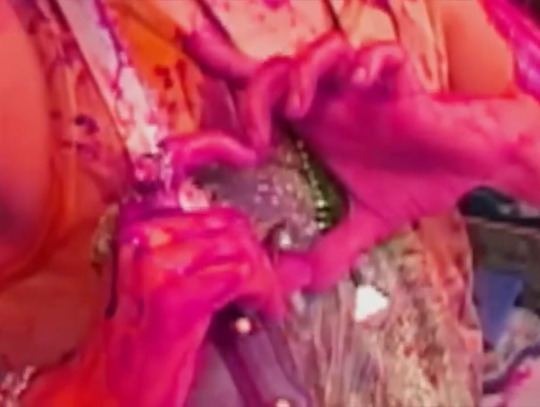
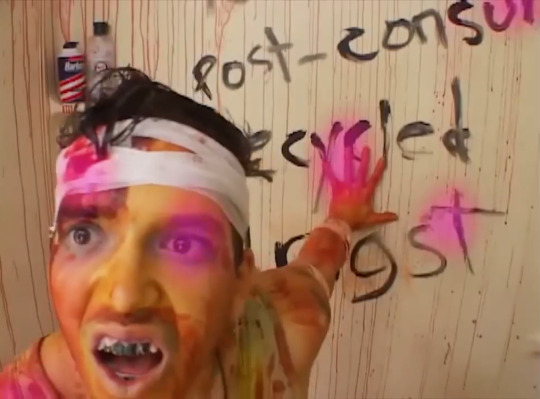

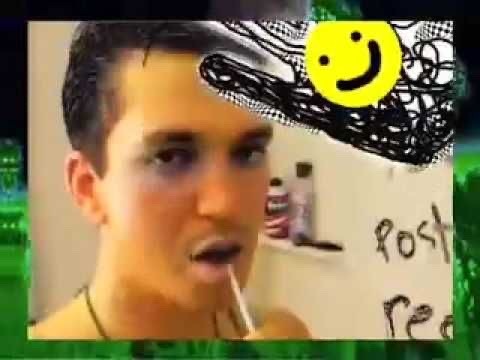
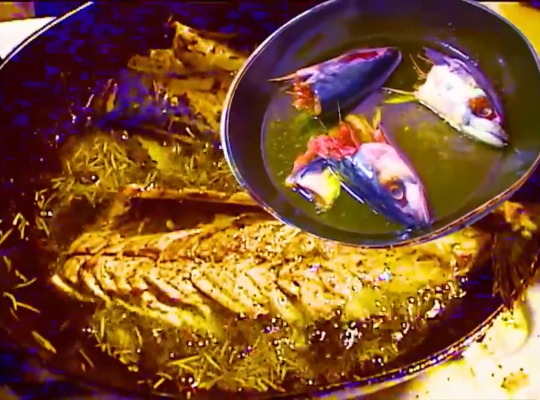
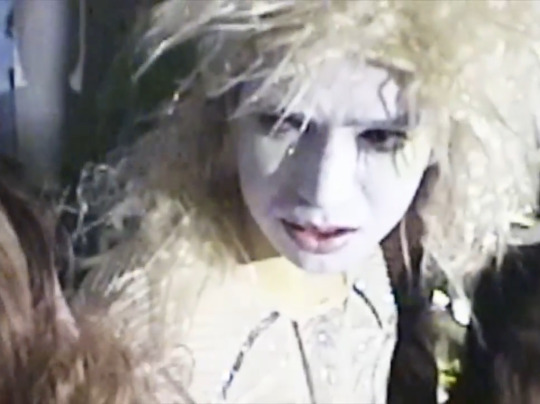
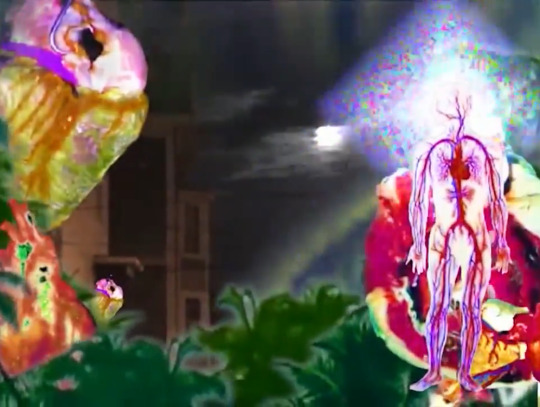
A Family Finds Entertainment (2004) dir. Ryan Trecartin
150 notes
·
View notes
Photo

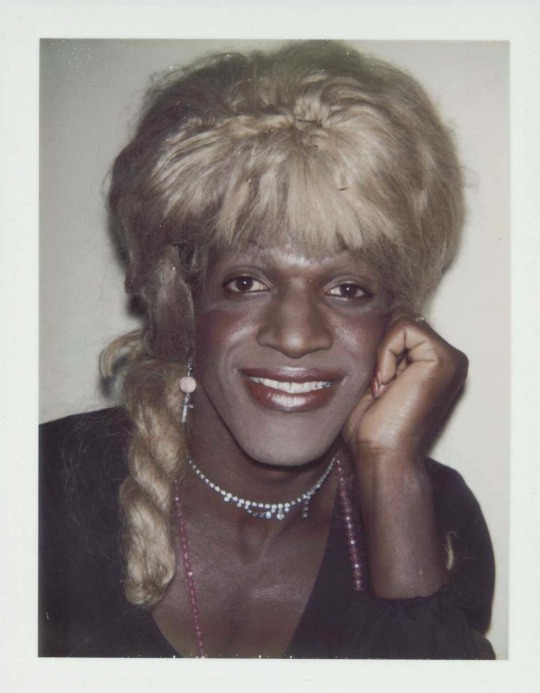
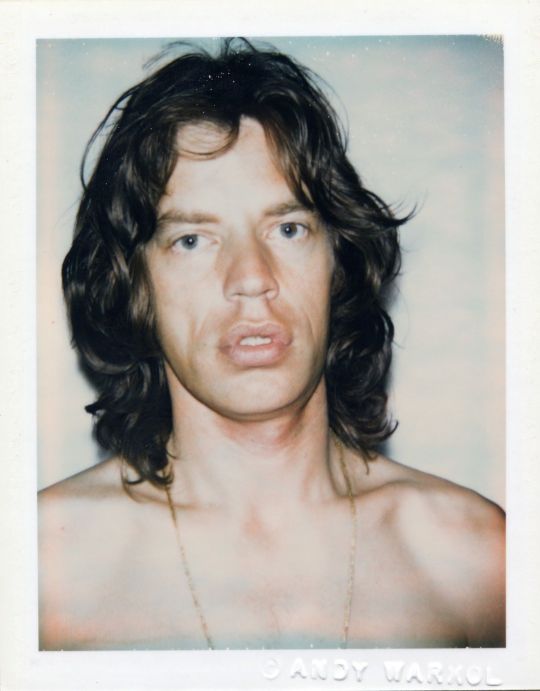
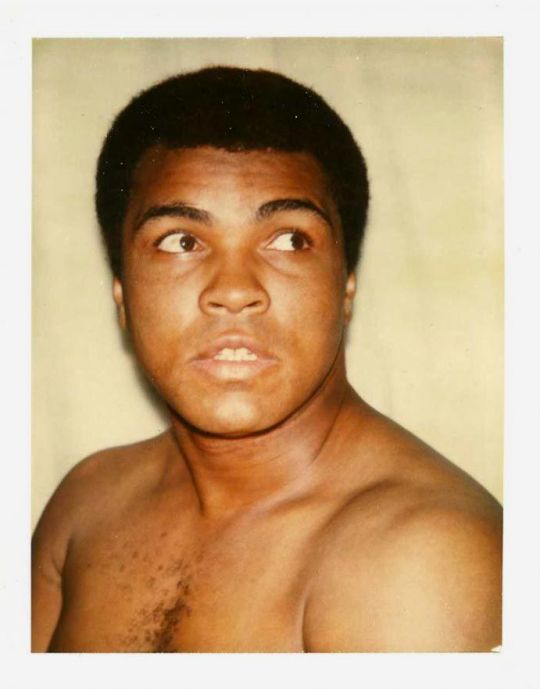
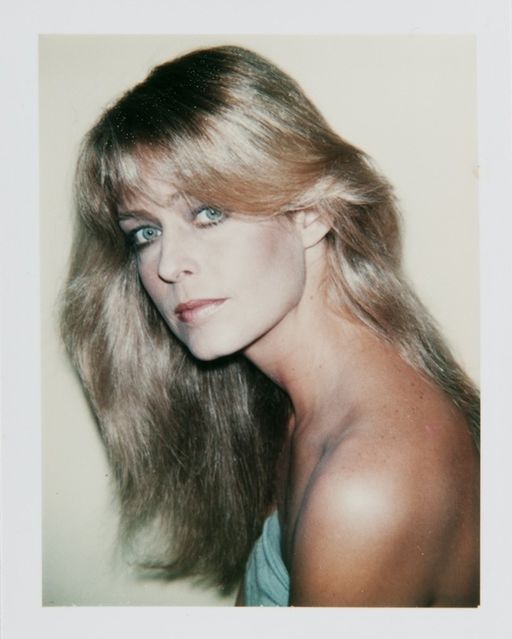
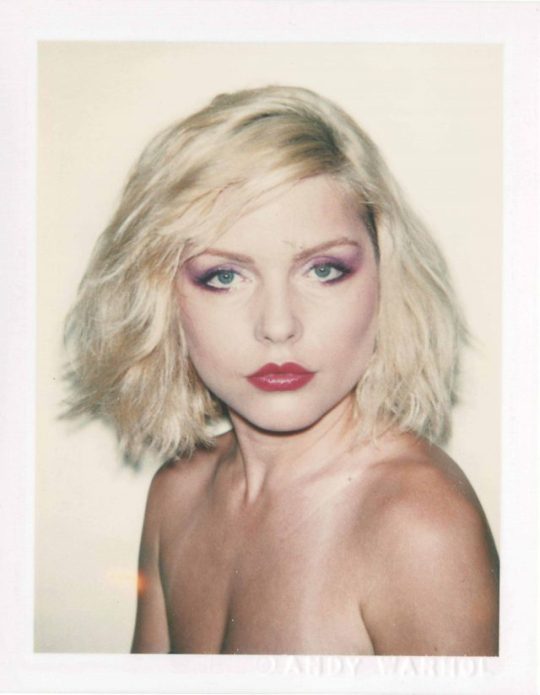

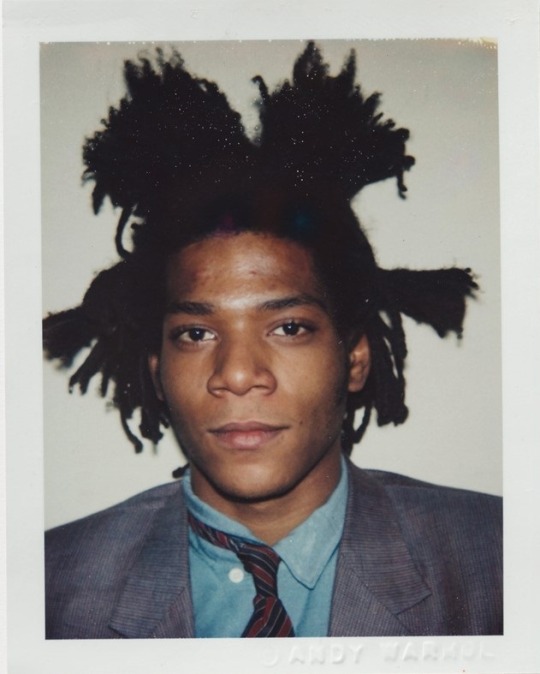
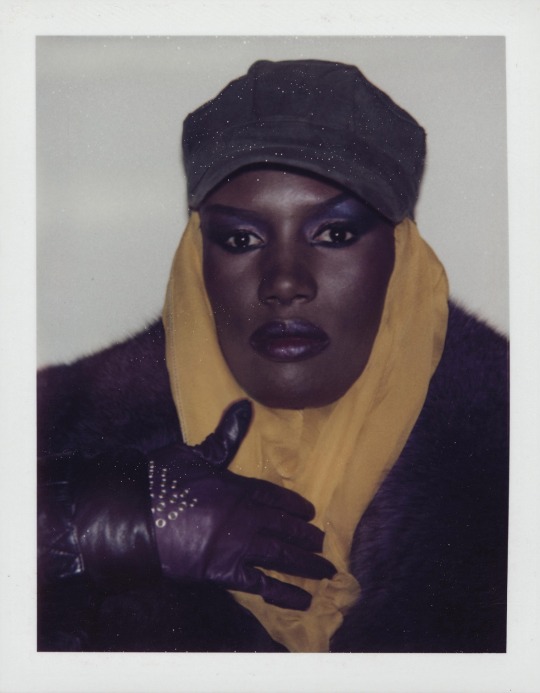
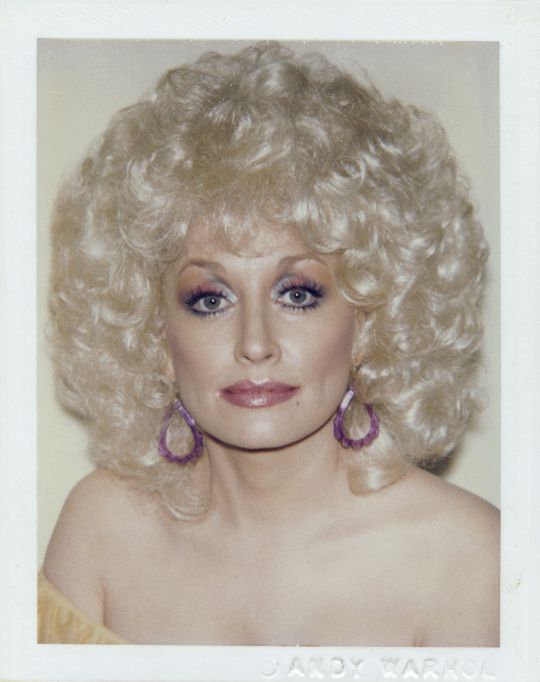
Polaroids by Andy Warhol
Jack Nicholson (1972)
Marsha P. Johnson (1974)
Mick Jagger (1975)
Muhammad Ali (1977)
Farrah Fawcett (1979)
Debbie Harry (1980)
Sylvester Stallone (1980)
Jean-Michel Basquiat (1982)
Grace Jones (1984)
Dolly Parton (1985)
19K notes
·
View notes
Photo
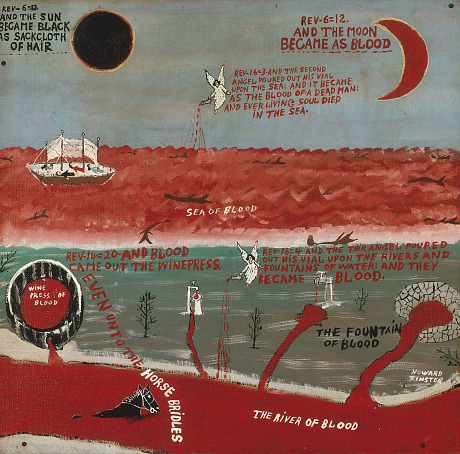
American visionary Howard Finsters painting “And the moon became as blood”
4K notes
·
View notes
Photo

Howard Finster “Elvis And The Arpitaun World” (1980)
195 notes
·
View notes
